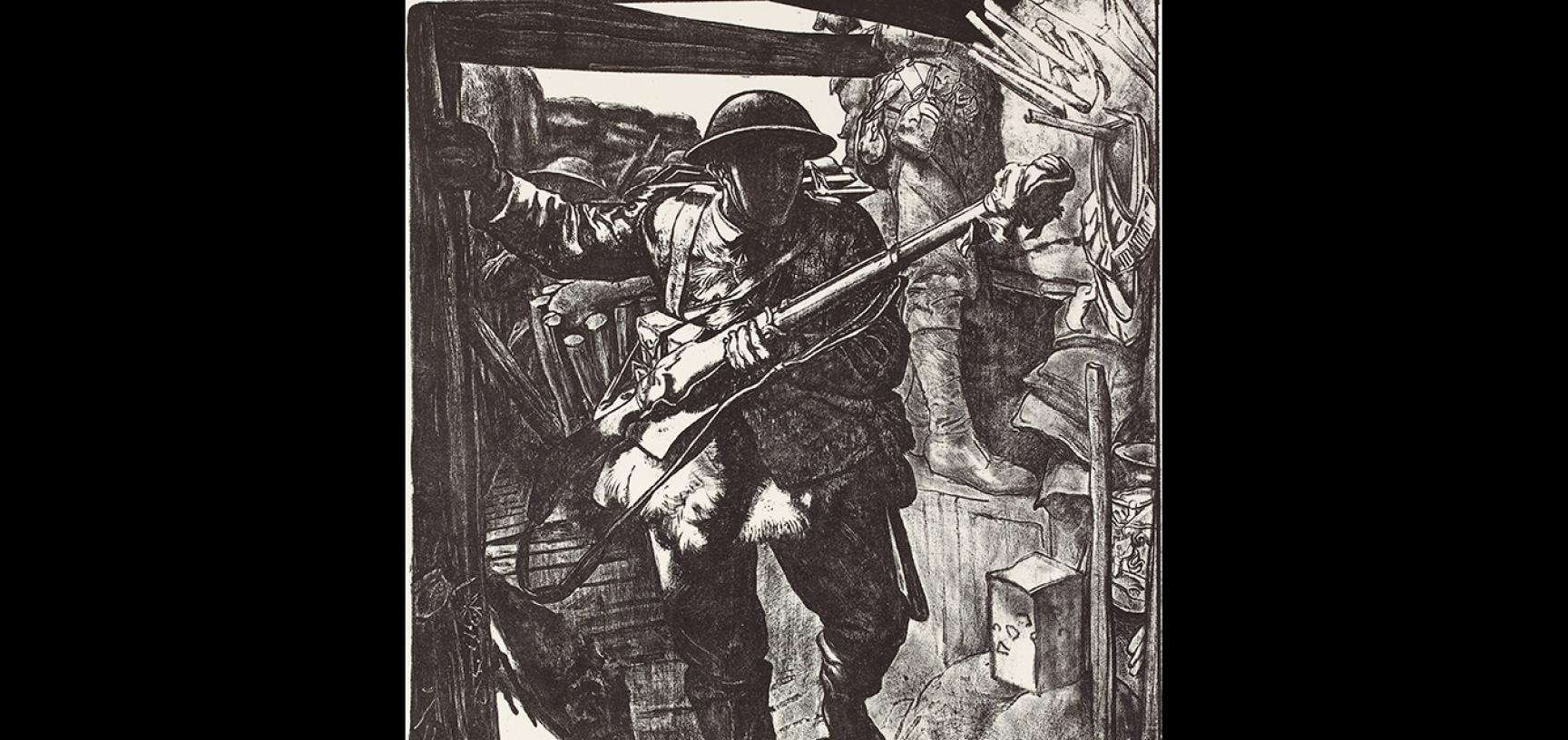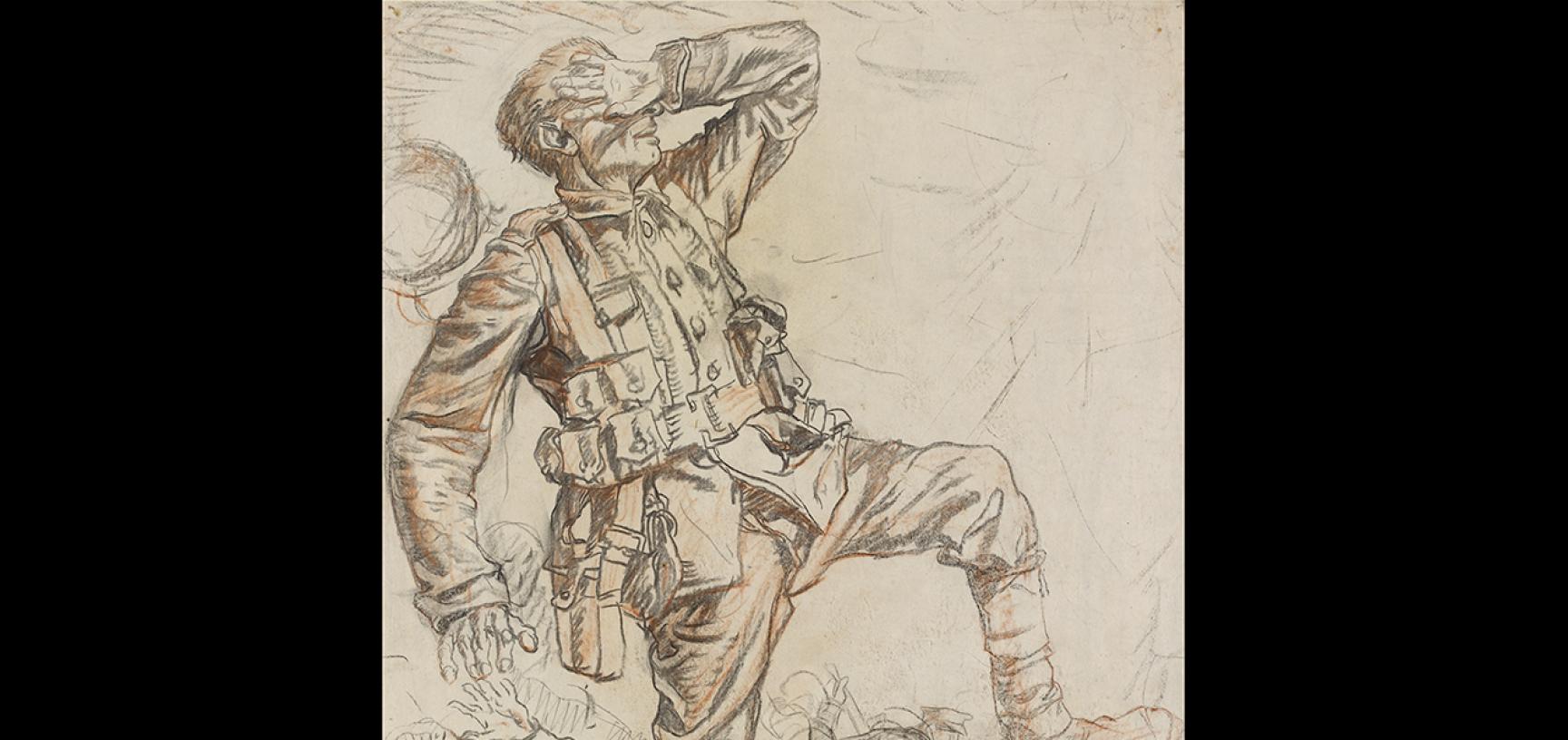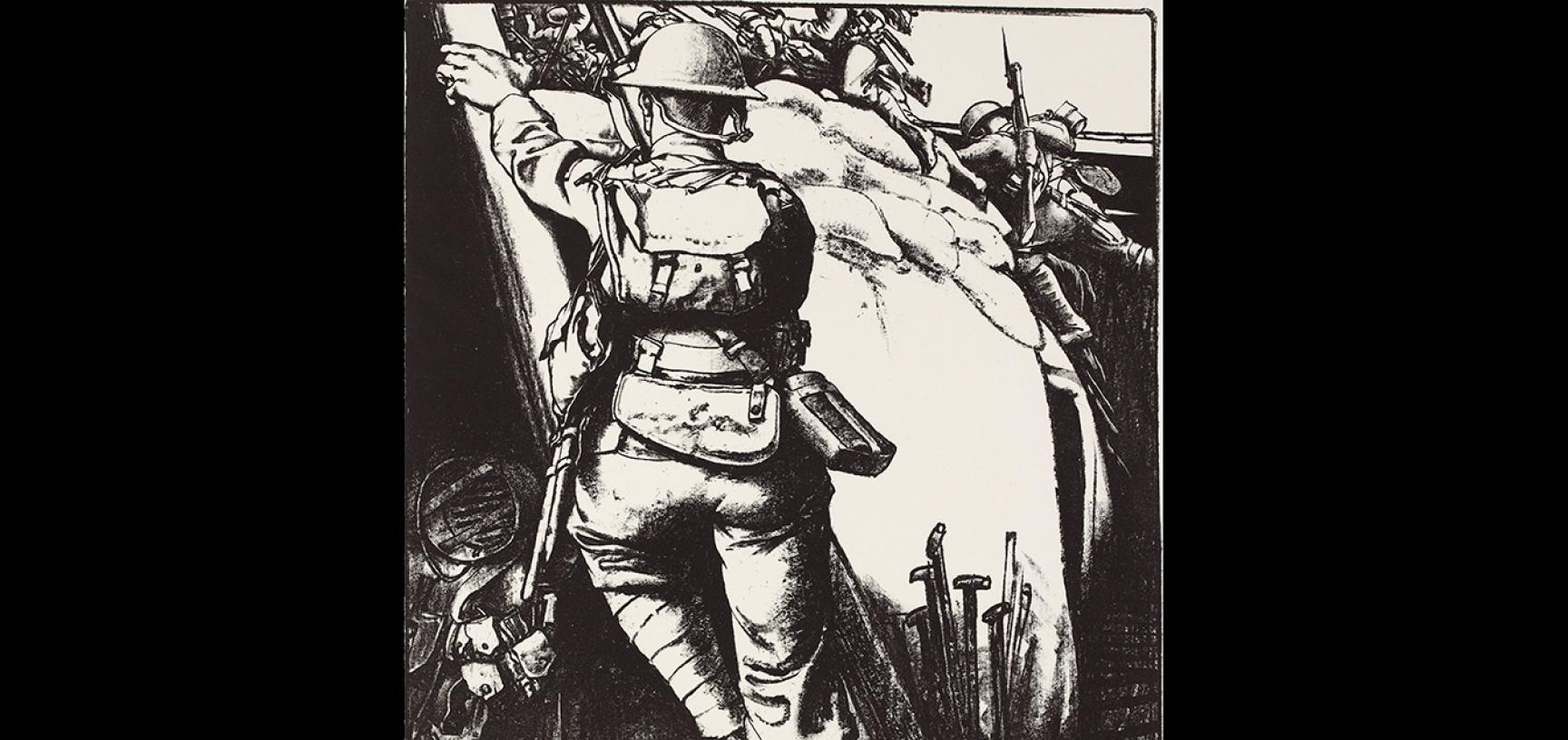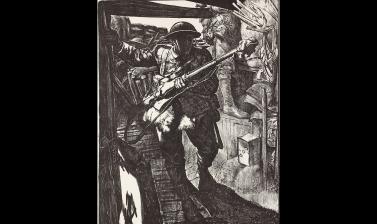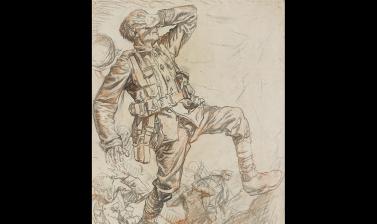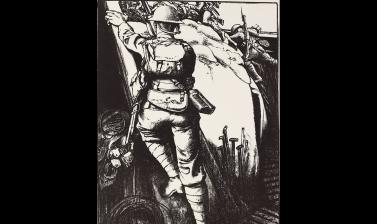BOOTS ON THE GROUND

BOOTS ON THE GROUND
1. Eric Kennington, Into the Trenches, 1917
Eric Kennington (1888–1960) takes us deep into the trenches with the troops on the front line with this powerful image. In this section we see two of a series of six lithographs he created for the Efforts and Ideals series, entitled 'Making Soldiers'. The dramatic shadows mask the soldier's face, but the carefully observed details of the scene indicate Kennington's familiarity with life in the trenches. The sharp diagonals of the composition increase the drama of the soldier's entrance, while the complex compression of the space to include the leg of the soldier in the background adds to the claustrophobic atmosphere of the image.
2. Frank Brangwyn, Soldiers under Airburst Fire ('Shell'), c. 1919
This drawing by Frank Brangwyn (1867–1956) was one of five commissioned by the Royal National Institute for the Blind, and the design was used for a poster to raise funds for soldiers blinded in action. Brangwyn later gave the works to St Dunstan's Hostel for Blinded Soldiers and Sailors. A Belgian-born artist, Brangwyn was employed in the workshops of Arts and Crafts designer William Morris, but was largely self-taught. Though not an official war artist, he produced more than eighty lithographic posters during the war and did much to call attention to the plight of the wounded and refugees. He often worked free of charge for charitable groups such as the Red Cross and the Belgian and Allied Aid League.
3. Eric Kennington, Over the Top, 1917
The tense moment of attack is portrayed in an almost calm, matter-of-fact manner, as the soldiers prepare to leave the trench according to planned procedure. Again, their faces are hidden from the viewer, but there is a solid monumentality about the standing figure on the left that is both impressive and moving. Kennington served on the Western Front but was wounded and then discharged in June 1915. After visiting the Somme in December 1916, as an unofficial visual recorder of events, he accepted a commission as official war artist from May 1917.


